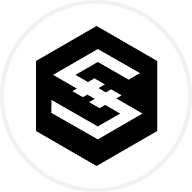How RWA, Blockchain, and the Dollar Are Transforming Global Finance
Introduction: The Rise of RWA, Blockchain, and the Dollar in Finance
The tokenization of Real-World Assets (RWAs) is revolutionizing the financial landscape, with blockchain technology and the dollar playing pivotal roles in this transformation. As the market for tokenized assets is projected to reach $10 trillion by 2030, this shift represents a structural evolution in global finance. This article explores how RWAs, blockchain, and the dollar are reshaping the financial ecosystem, the opportunities they present, and the challenges that lie ahead.
What Are Real-World Assets (RWAs) and Why Are They Important?
Real-World Assets (RWAs) refer to tangible or financial assets, such as real estate, private credit, or government bonds, that are tokenized and represented on a blockchain. Tokenization involves converting these assets into digital tokens, enabling fractional ownership, increased liquidity, and 24/7 trading.
RWAs are significant because they bridge the gap between traditional finance (TradFi) and decentralized finance (DeFi). By leveraging blockchain technology, RWAs reduce settlement delays, compliance costs, and illiquidity, creating a more efficient, transparent, and accessible financial system. This makes them attractive to both institutional and retail investors.
The Role of Blockchain in RWA Tokenization
Blockchain technology serves as the backbone of RWA tokenization, providing the infrastructure for secure, transparent, and immutable transactions. Ethereum currently dominates the RWA landscape, hosting over 75% of tokenized assets. However, emerging Layer 2 solutions and alternative blockchains like Avalanche and IOST are gaining traction due to their scalability and cost efficiency.
Key Technological Advancements Driving RWA Growth
Zero-Knowledge Proofs (ZKPs): These enable privacy-preserving compliance, allowing sensitive data to remain confidential while meeting regulatory requirements.
Cross-Chain Interoperability: This ensures seamless movement of tokenized assets across different blockchains, enhancing liquidity and ecosystem integration.
Dedicated RWA Blockchains: Platforms like Plume and IOST are designed specifically to address the unique needs of tokenized assets, including compliance, liquidity, and lifecycle management.
The Dollar’s Role in the RWA Ecosystem
Stablecoins, pegged to the U.S. dollar, have been instrumental in the growth of RWAs. Representing over $240 billion of the RWA market, stablecoins provide a stable medium of exchange and a foundation for tokenized assets.
As the RWA market matures, there is a shift toward higher-yielding tokenized assets, such as Treasury-backed tokens and private credit. These assets offer real yield, with Treasury-backed tokens yielding 4-5% and private credit tokens offering 8-10%, making them highly attractive to institutional investors.
Institutional Adoption of RWAs
Major financial institutions like BlackRock, Franklin Templeton, and JPMorgan are leading the adoption of tokenized assets. For instance, BlackRock’s BUIDL fund holds $2.9 billion in tokenized U.S. Treasuries, showcasing the growing confidence in this emerging asset class.
Why Are Institutions Embracing RWAs?
Yield Opportunities: Tokenized assets offer competitive yields compared to traditional financial instruments.
Operational Efficiency: Blockchain reduces settlement times and compliance costs, streamlining operations.
Regulatory Clarity: Frameworks like the GENIUS Act in the U.S. are providing the regulatory certainty needed for institutional participation.
Benefits of RWA Tokenization
Increased Liquidity: Tokenization enables fractional ownership, making traditionally illiquid assets more accessible.
24/7 Trading: Unlike traditional markets, tokenized assets can be traded around the clock.
Programmable Compliance: Smart contracts automate compliance processes, reducing costs and errors.
Global Accessibility: Blockchain removes geographical barriers, allowing investors worldwide to participate.
Challenges and Risks in the RWA Market
While the potential of RWAs is immense, several challenges need to be addressed:
Regulatory Hurdles: Despite progress, regulatory frameworks are still evolving, creating uncertainty for market participants.
Lack of Secondary Markets: The absence of robust secondary markets limits liquidity for certain tokenized assets.
Infrastructure Gaps: The need for composability and seamless integration across platforms remains a challenge.
The Future of RWAs: Market Growth and Projections
The RWA market is transitioning from speculative crypto cycles to utility-driven growth. With projections of $10 trillion by 2030, tokenized assets are poised to become a cornerstone of global finance. Dedicated RWA-focused blockchains and modular infrastructure solutions will play a crucial role in addressing the unique needs of this market.
Key Trends to Watch
Institutional Adoption: As regulatory clarity improves, more institutions are expected to enter the RWA space.
Technological Innovations: Advancements in ZKPs, cross-chain interoperability, and dedicated blockchains will drive growth.
Shift Toward Utility: The focus is moving from speculative assets to real-world use cases, such as private credit and real estate.
Conclusion: A New Era for Finance
The convergence of RWAs, blockchain, and the dollar is ushering in a new era of financial innovation. By addressing inefficiencies in traditional finance and unlocking new opportunities, tokenized assets are set to transform the global financial ecosystem. As the market continues to grow, staying informed about these developments will be crucial for investors, institutions, and policymakers alike.
© 2025 OKX. Denne artikkelen kan reproduseres eller distribueres i sin helhet, eller utdrag på 100 ord eller mindre av denne artikkelen kan brukes, forutsatt at slik bruk er ikke-kommersiell. Enhver reproduksjon eller distribusjon av hele artikkelen må også på en tydelig måte vise: «Denne artikkelen er © 2025 OKX og brukes med tillatelse.» Tillatte utdrag må henvise til navnet på artikkelen og inkludere tilskrivelse, for eksempel «Artikkelnavn, [forfatternavn hvis aktuelt], © 2025 OKX.» Noe innhold kan være generert eller støttet av verktøy for kunstig intelligens (AI/KI). Ingen derivatverk eller annen bruk av denne artikkelen er tillatt.



